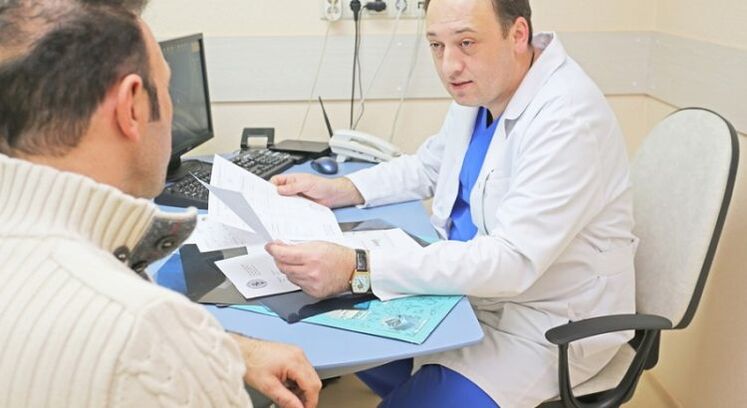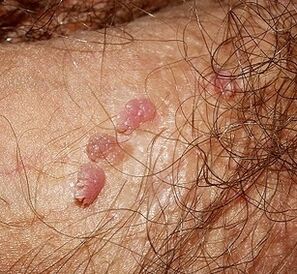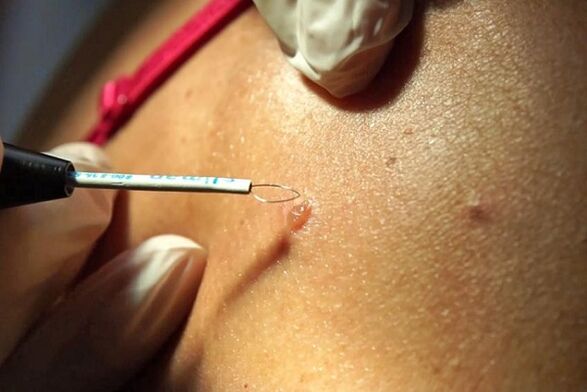
Most of the time, people do not know that the human papillomavirus (HPV) is present in their body.This is due to the fact that the papillomavirus is usually present in a latent form, suppressed by natural immunity.Problems arise when it gets out of control and begins to actively manifest itself in the form of growths in different parts of the body.Men are less likely than women to suffer the consequences of the virus, but even in them its effects can cause serious problems in the form of papillomas on the penis.
Causes
Viral DNA enters the body through microcracks in the skin or mucous membranes.If a man's immunity is weakened, the first manifestations of HPV will appear several months after infection.
Up to 80% of transmission cases occur through sexual relations.Barrier contraception minimizes the risk of infection, but does not eliminate it completely.
Other routes of infection:
- Domestic way.The virus is transmitted through the personal belongings of an infected person: clothing, hygiene items, etc.The risk of transmission increases if there is damage to the skin, even if it is slight.This route is characterized by infection with types of viruses that are poorly oncogenic.They do not cause serious health problems, but appear in the form of condylomas, papillomas and warts, creating a cosmetic defect.
- From mother to son.If a mother was infected with HPV during pregnancy and childbirth and gave birth naturally, the child is most likely infected.
If a man has good immune defenses, the virus does not manifest itself and can remain in the body for a long time in a latent form.Therefore, what is dangerous is not the virus infection itself, but the weakening of the immune system, which leads to the activation of HPV.
There are a number of factors that influence the possibility of the virus getting stronger:
- chronic diseases;
- hormonal problems;
- incorrectly selected contraception or its complete absence;
- viral infections;
- alcohol, smoking or long-term use of antibiotics;
- frequent stress.
All of these factors negatively affect the immune system.If in a man's life there is not one provoking factor, but several, this will lead to a faster development of the papillomavirus.
Symptoms
Often papillomas appear only externally, but in some cases they can occur.nonspecific symptoms:
- itching and burning during sexual intercourse;
- pain when touching papillomas;
- accumulation of urine in the folds of the penis;
- unpleasant odor in the affected area.
In addition, neoplasms can grow and affect not only the penile area, but also appear in the anus and pubis.

What do papillomas look like?
Papilloma on the penis is a small neoplasm.At first it may appear alone, but without proper treatment, the number of papillomas increases.At the same time, they can merge with each other.
These new growths resemble flesh-colored or pink cauliflower inflorescences.Most often they are located in the foreskin area, on the head and on the frenulum.Less commonly, they are diagnosed in the urethra and scrotum.Papillomas can also appear as small white pimples that appear in long rows.This shape is typical for location in the frenulum area.
One of the manifestations of HPV is Buschke-Levenshtein condyloma.It is characterized by rapid growth, outstanding size and resistance to various types of treatment.Its appearance is due to several existing papillomas and condylomas, which merge and form a large affected area.The presence of Buschke-Levenshtein condyloma is dangerous because the cells altered by it can easily become cancer.
Which doctor should I contact?
As a rule, a urologist diagnoses papillomas in men.You can also consult a dermatovenerologist or proctologist if you have condylomas in the anal area.However, to remove papillomas, they are usually referred to a surgeon.In total, the diagnosis is carried out in several stages:
- The urologist examines and interviews the patient.An oral interview is necessary to evaluate the patient's lifestyle and determine the cause of the virus infection.A visual examination involves not only assessing the condition of the penis, but also the adjacent organs: the scrotum and the anal area.This is necessary to complete the picture of the virus's localization.
- Presenting a smear from the urethra.Determines the presence of various sexually transmitted diseases.
- PCR.This analysis not only shows the presence of HPV in the body, but also probably determines its type.
- Meatoscopy.This procedure is an examination of the urethra if the papillomavirus has affected the frenulum.
- After removal of the papilloma.the doctor may order a biopsyto evaluate the status of a remote tumor.This is necessary to eliminate the risk of cancer and ensure that the papilloma is benign.
In this case, it is advisable to examine both partners.Usually the woman is also infected with one of the types of papillomavirus.If only one man is treated, he is likely to get sick again after a while.
Why are papillomas dangerous?
The human papillomavirus is usually accompanied by other related diseases.The appearance of papillomas in the glans area contributes to the accumulation of urine in the folds.This creates the conditions for the appearance and growth of various microorganisms, which subsequently lead to infections.They can cause erosion around the papilloma and also contribute to inflammation of the urethra and testicles.These diseases are characterized by problems urinating, pain and high fever.
Another danger is injury to tumors, which causes hemorrhages.This is due to the fact that many blood vessels are formed around papillomas that supply them with blood.Even minor damage can lead to infection due to trauma.
In addition, neoplasms can rub when moving, causing pain and discomfort to a man.
HPV and cancer
When the virus is just beginning to spread, neoplasms are rare and benign.Without treatment, they grow and fuse with each other.Over time, the cells degenerate into malignant cells.The risk of cancer is especially high if a man is infected with highly oncogenic virus types - 16 or 18.They contribute to the development of penile and bladder cancer.
Papilloma treatment
Treatment of HPV involves not only eliminating its external manifestations, but also strengthening the immune system, which should block the manifestations of the virus.To maintain immunity, immunostimulating drugs are used.
An ointment that suppresses the multiplication of the virus and eliminates small growths is effective as an antiviral drug.It does not always cope with the task of complete removal, but prevents the appearance of new growths.To stimulate the immune system, antiviral ointment is prescribed.The ointment does not eliminate papillomas, but helps activate the cells of the immune system, which stops their growth and development.

Removal methods
There are several ways to get rid of emerging tumors:
- Laser removal.The papilloma is exposed to a laser beam, which completely burns off the growth.A scab forms at this site and falls off after a few weeks.The method is considered effective due to the absence of relapses.The extraction is performed under anesthesia.In this case there is no bleeding, no scars or scars remain.
- Cryodestruction.Papillomas are exposed to liquid nitrogen.It instantly freezes the desired area, the neoplasm is destroyed and dies.The disadvantage of this method is the inability to control the depth of cryodestruction.A crust also remains at the site of the removed papilloma, which disappears after some time.
- Radiosurgery.The principle of operation of this method is similar to that of laser removal.Radio waves do not leave scars and the procedure is preceded by preliminary anesthesia with a special spray.Afterwards there are no complications and the body recovers quickly.
- Electrocoagulation.The growth is exposed to an electrical current, so the stalk is removed, after which the papilloma disappears.If necessary, superficial anesthesia can be used.The procedure takes a few minutes, is widespread and affordable.But this method may leave scars after healing.
- Surgical intervention.It is used in rare cases when the tumor grows too large.It is performed under anesthesia and is characterized by long healing and traumatization.The good thing about this method is that it allows you to preserve the removed growth for histological examination.
The price of each method depends on the complexity of the work, the size and number of papillomas to be removed.
Before choosing any method, consult your doctor.He will tell you what is best to use in your situation and explain in detail how the procedure is carried out.In addition, after removing the tumor, it is advisable to take material for histology.This is necessary to determine whether the process of degeneration of benign neoplasms into malignant ones has begun.This method will help detect early cellular changes and prevent the spread of cancer.























